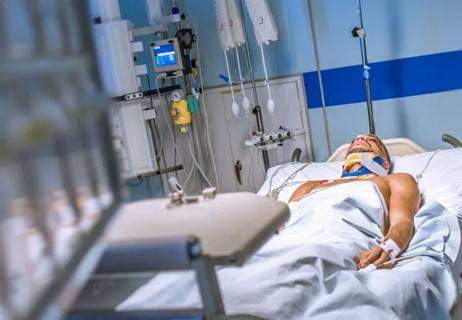
How did Cleveland Clinic go from starting its first shared medical appointment (SMA) to being a leader in the field ― now offering more than 200 different SMAs to patients?
Cleveland Clinic is a non-profit academic medical center. Advertising on our site helps support our mission. We do not endorse non-Cleveland Clinic products or services. Policy
Consult QD sat down with Marianne Sumego, MD, Director of Shared Medical Appointments, to find out how it all started and where she’s hoping to take SMAs next.
When and why did you start offering shared medical appointments?
SMAs began in the U.S. in the mid-1990s, and I started doing them at Cleveland Clinic in 1999 after being introduced to the concept by Dr. Ed Noffsinger. At that time, he was at Kaiser Permanente and was the originator of the model. SMAs give us the opportunity to increase time spent with patients. This was my key interest in starting the group visit model, and we had immediate positive feedback. There was something about the appointments patients liked and needed.
How did you make this new healthcare delivery idea a reality at Cleveland Clinic?
Taking an unfamiliar, little known concept to reality required a vision of the potential beyond just the SMA visit itself. Change took time, and we had to socialize the concept and address the concerns expressed by our caregivers. We did our best to meet challenges with creative solutions, starting small and adjusting as we went. The feedback of our SMA teams helped us move towards a best practice of implementation.
What support did you receive along the way?
It started with individuals who shared the vision, including peers and Cleveland Clinic leadership providing the support and visibility we needed to move forward. The most important mentors were my colleagues and their SMA teams who trusted and contributed to the process. The path to success also included the influence of our patients, who willingly and honestly provided feedback and recommendations. The support in development involved many areas coming together, including scheduling, marketing for education, and IT for streamlining documentation.
As the director of SMAs, what is your job?
My job today is to oversee the SMA appointment from concept through to a medical visit. Working with a program manager, I help guide the teams on developing workflows essential for efficient documentation. Our continued growth is a credit to our physicians who have contributed feedback on the process, overcoming hurdles. We have developed education tools that we utilize for all areas, clinical and clerical. Now, we have many champions in our organization providing support for each other. We conduct training sessions two or more times a years to provide tips for efficiency and to help troubleshoot areas of need.
How do you know they are working?
Through our data we demonstrate lower wait days to a given appointment in addition to higher patient satisfaction with the SMA appointment. Many of our Cleveland Clinic providers are doing more than one SMA, which implies that the experience is engaging and fun for the team as well as the patients. I could share so many stories of success. Specific to our Diabetes SMAs, I have seen patients resolve their diabetes with exercise, diet and weight management, and I see patients connecting with each other so they are sure to attend the next appointment at the same time.
Our Department of Pediatric and Adult Endocrinology offers SMAs for patients with type 1 and type 2 diabetes, and we recently collaborated with members of the Pediatric Endocrinology department on a research project. Our results were reported in this article Effectiveness of Shared Medical Appointments versus traditional clinic visits for adolescents with Type 1 Diabetes.
Are most Cleveland Clinic institutes providing SMAs now?
We have grown from a handful of active SMAs to a robust program offering more than 200 different types of shared appointments, and we have conducted close to 100,000 shared visits across the health system. Today, our SMA visits are standardized, full medical appointments that address the medical needs of each patient. In addition, SMAs help us tackle traditional hurdles such as time constraints, resources and complexity of care.
Any final thoughts?
Patient care is a continuum and this model allows us an additional way to positively impact patient experience, access and quality of care. We are expanding our SMAs as a part of chronic care delivery and have just started examining the role of virtual appointments.

OMT may be right for some with Graves’ eye disease

Don’t skip the prevention conversation with your patients

ATHOS-3 subgroup analyses reveal compelling benefits

Many providers continue this non-evidence-based practice

Share this link with those concerned about brain disease

The clinical picture

Communication strategies to optimize patient care

Communication strategies to optimize patient care